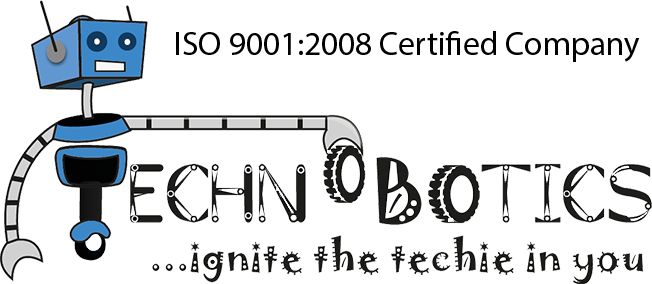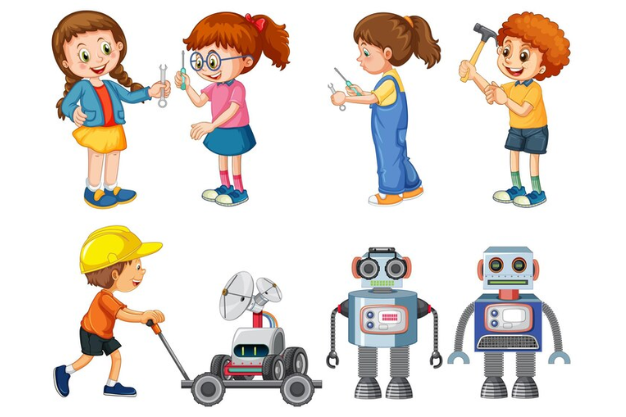In this technical age where computers and information technology have seeped into our everyday lives from every nook and corner, and to attain job skills, it is essential to include robotics stem education in schools, as done by Technobotics. For many years, a robot adhering to the manufacturing processes was the only place to encounter robots. Still, with the adoption of robotics in education, there are new learning systems that are better and more effective. It is essential to merge robotics into school programs to form a connection between theory and practice, contributing to critical thinking skills.
Understanding Robotics STEM Education
- Robotics stem education involves building robots and covers multidisciplinary approaches combining all STEM elements. Through the robotics programs, students start their lessons by working with robotics programming. For instance, they get involved in designing, programming, or trying to resolve some issues when working with robotics systems. These activities are working together, being creative, and not giving up. These skill sets are required to get a career in life.
Benefits Of Integrating Robotics
Here are some benefits of integrating robotics curriculum in schools.
- Fostering Creativity and Innovation
Robotics tasks have students work on problems faced in daily life but need creative solutions. Students might learn more from the unconventional function, knowledge, and innovative problem-solving approaches. Robotics career opportunities are numerous, and the skills acquired through education help in all types of job opportunities.
- Enhancing Critical Thinking and Problem-Solving Skills:
Compared to a theoretical approach, robotics stem education brings the concepts to the current situation and makes students apply the learned skills to solve practical problems. This way, students develop their analytical thinking and logical reasoning. When handing out technical glitches or programming errors, students can debug and iterate their designs alongside learning how to solve problems by probability.
- Promoting Collaboration and Communication
In robotics, students learn the basics of collaboration between team members, who must be synchronized to work for mutual goals. A collective approach through the robotics curriculum in schools enables students to express themselves understandably, exchange ideas, and discover the teamwork power that is very important in professional environments.
- Building Digital Literacy
Despite a rapidly digitizing present, the mastery of the technology must be regarded as a priority. Students in robotics programs experience various technologies like writing languages, sensor base repairs, and hardware components. This helps them to get digital literacy skills that can be handled across multiple industries.
Implementing Robotics in Schools:
Here are some strategies for successful implementation of robotics curriculum in schools–
- Teacher Training
Professional development is an essential factor for teaching robotics successfully. Workshops, online courses, and mentorship programs can enrich teachers regarding robotics principles and the various ways of teaching these concepts.
- Accessible Resources
Schools must have kits, software platforms, and teaching materials identical for different ages and grades. Working with industry partners, using the assets of the open source community, and seeking funding can make robotics learning more available and longer lasting.
- Integration with Curriculum
Adding this robotics component will help illustrate the integral relationship between STEM subjects. These projects can be designed to include learning objectives across different areas of learning, and in this way, students will be able to acquire core concepts as well as practical and hands-on experiences.
- Extracurricular Programs
The extracurricular clubs such as robotics, competitions, and workshops outside the regular hours of learning broaden the sphere of your field of interest. Extracurricular activities build unity and enthusiasm among people involved; hence, they are geared towards taking up robotics for a long time.
- Community Engagement
Similarly, involving parents, companies located in the area, and community organizations will assist in creating a support system to enhance robotics education initiatives. Demonstrating this magical world in robotics fests, having guest speakers, and arranging field trips can draw students’ proximity to the practical applications of robotics and help them set their goals high.
- Highlight Achievements and Reward Success
Encourage students to show their activities in the robotics curriculum through exhibitions, awards ceremonies, or media coverage. Bring projects and achievements into the community, initially showing how robotics education improves student learning and skill enhancement. With this, you foster the thinking that robotics integration is what counts and thus leads to more people joining and pushing the boundaries.
Wrapping It
The robotics integration into the school programs will not only be about training students with the necessary knowledge and skills for tomorrow but also whose aim will be to create students who will be active in critical thinking, solving problems, and innovation that will deal much more efficiently and effectively in their future career. Educators like us, at Technobotics, help nurture these interests and encourage them to be creative and become knowledgeable through practical robotics classes. Additionally, we develop transferable skills that transcend knowledge through participation in robotics. Since robotics is revolutionizing every day in the technology and industry environment, it is essential to invest in robotics education immediately.


